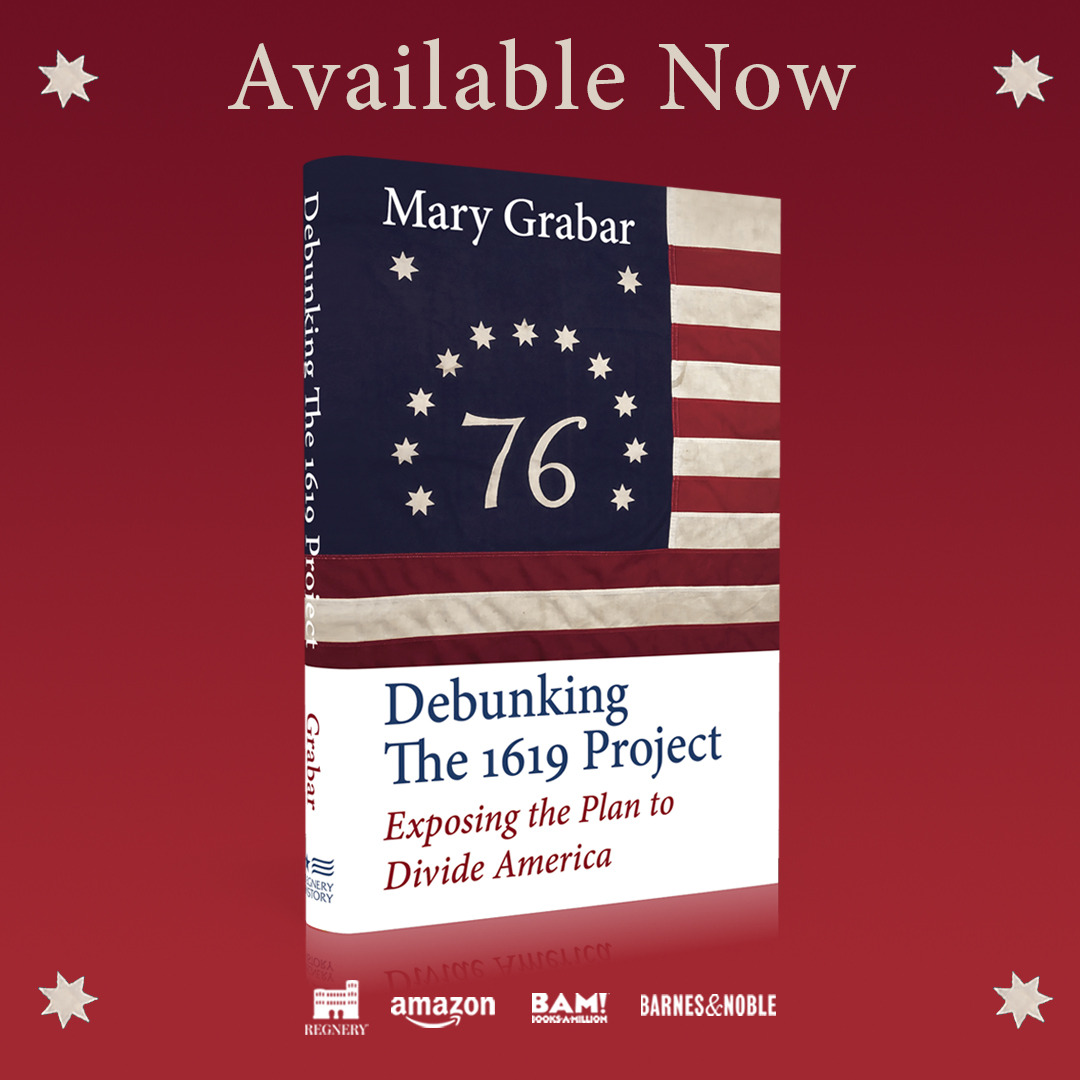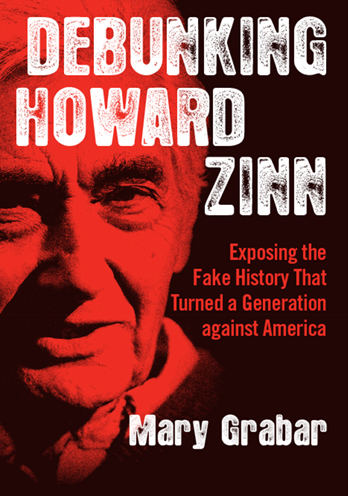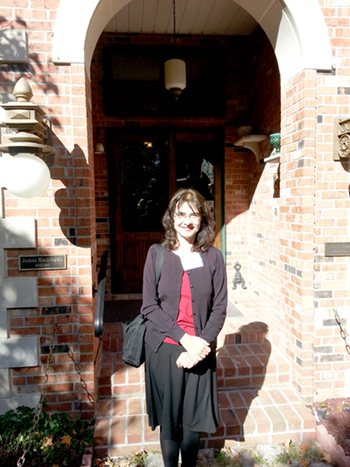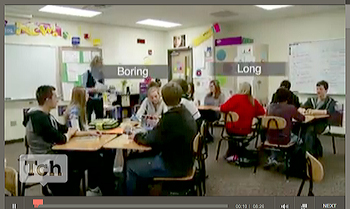 See the video here: No Wonder They Read Vampire Novels, by Mary Grabar, Posted November 20, 2012. Common Core proponents and their backers like Bill Gates keep reassuring us that the increased emphasis on “informational texts” will motivate students and improve their reading skills. In the interest of academic “rigor,” therefore, the new Department of Education diktats prescribe the replacement of a good chunk of literary reading with informational texts. In high school that means devoting 70 percent of the time to “informational texts.”
See the video here: No Wonder They Read Vampire Novels, by Mary Grabar, Posted November 20, 2012. Common Core proponents and their backers like Bill Gates keep reassuring us that the increased emphasis on “informational texts” will motivate students and improve their reading skills. In the interest of academic “rigor,” therefore, the new Department of Education diktats prescribe the replacement of a good chunk of literary reading with informational texts. In high school that means devoting 70 percent of the time to “informational texts.”
Students will like this, we are assured. But since it appears that this is not naturally the case, even among those who devour Harry Potter and Little House on the Prairie books on their own, the educrats find themselves producing inspirational films through the Teaching Channel, which received seed money from the Bill Gates Foundation and the William and Flora Hewlett Foundation.
In this video, titled “Comic Book Templates: An Entry Point into Nonfiction,” the teacher asks students their opinions on reading nonfiction. They reply “bo-o-oring.” The enthused teacher then tells us that she will give strategies to make students “motivated and confident.” Students are divided into four “pods” to each read one informational text. Fighting against the inherent boredom factor, she has to instruct students on how to read--“as though there’s a movie in your mind.” (Of course, this extra step is not necessary with fiction because there is something called a plot.) Students must be shown how much fun it is to read informational texts—especially the kind chosen by teachers and curriculum writers. Using comic book templates, she asks them to “map” the introductions. Big poster boards are needed and students get the intellectual challenge of choosing various shapes, working collaboratively, and filling in the pieces with words (kind of like coloring). Why read Huckleberry Finn when you can fill in shapes with words from Barbara Ehrenreich’s engrossing socialist tract Nickel and Dimed, one of the four “informational texts” chosen for this lesson?
Another one is Bitter Chocolate: The Dark Side of the World’s Most Seductive Sweet. In case you didn’t pick up on the double entendre and cheery tone that would make every teen want to get absorbed in its narrative, Amazon provides some apt quotations:
A shocking exposé of the little-known corruption and exploitation found at the heart of the multibillion-dollar cocoa industry—blood diamond for chocolate.
"It's the measure of a vast gulf between the children who eat chocolate on their way to school in North America and those [in Africa] who must, from childhood, work to survive...between the hand that picks the bean and the hand that unwraps the candy bar."—from the introduction to Bitter Chocolate
Whether part of a child's Halloween haul or the contents of a heart-shaped box, chocolate is synonymous with pleasure. But behind the sweet image is a dark history of exploitation.
Another of the four chosen “informational texts” is about “blood diamonds,” Blood Diamonds: Tracing the Deadly Path of the World’s Most Precious Stone.
This is the description on the Amazon page:
First discovered in 1930, the diamonds of Sierra Leone have funded one of the most savage rebel campaigns in modern history. These "blood diamonds" are smuggled out of West Africa and sold to legitimate diamond merchants in London, Antwerp, and New York, often with the complicity of the international diamond industry. Eventually, these very diamonds find their way into the rings and necklaces of brides and spouses the world over.
It is a “gripping tale” we are told:
Blood Diamonds is the gripping tale of how the diamond smuggling works, how the rebel war has effectively destroyed Sierra Leone and its people, and how the policies of the diamond industry - institutionalized in the 1880s by the De Beers cartel - have allowed it to happen. Award-winning journalist Greg Campbell traces the deadly trail of these diamonds, many of which are brought to the world market by fanatical enemies. These repercussions of diamond smuggling are felt far beyond the borders of the poor and war-ridden country of Sierra Leone, and the consequences of overlooking this African tragedy are both shockingly deadly and unquestionably global. Updated with a new epilogue.
While the romantic pleasures of chocolates and diamonds may lie off a few years for spiritual killing by remembrances of the two aforementioned books, the fourth book, Chew On This: Everything You Don’t Want to Know about Fast Food will kill the immediate pleasures of a Big Mac. The poison cross bones on the cover give away the message, but the Amazon page makes it explicit:
In the New York Times bestseller Chew on This, Eric Schlosser and Charles Wilson unwrap the fast-food industry to bring you a behind-the-scenes look at a business that both feeds and feeds off the young. Find out what really goes on at your favorite restaurants—and what lurks between those sesame seed buns.
Praised for being accessible, honest, humorous, fascinating, and alarming, Chew On This was also repeatedly referred to as a must-read for kids who regularly eat fast food. Having all the facts about fast food helps young people make healthy decisions about what they eat. Chew On This shows them that they can change the world by changing what they eat.
Chew on This also includes action steps, a discussion guide, and a new afterword by the authors.
Should the hapless teenager decide instead to go to a diner, he will likely remember the oppressive conditions of the workers described by Barbara Ehrenreich in her tome, Nickel and Dimed: On (Not) Getting By in America, which is described thus on the Amazon page:
Our sharpest and most original social [socialist] critic goes "undercover" as an unskilled worker to reveal the dark side of American prosperity.
Millions of Americans work full time, year round, for poverty-level wages. In 1998, Barbara Ehrenreich decided to join them. She was inspired in part by the rhetoric surrounding welfare reform, which promised that a job -- any job -- can be the ticket to a better life. But how does anyone survive, let alone prosper, on $6 an hour? To find out, Ehrenreich left her home, took the cheapest lodgings she could find, and accepted whatever jobs she was offered. Moving from Florida to Maine to Minnesota, she worked as a waitress, a hotel maid, a cleaning woman, a nursing-home aide, and a Wal-Mart sales clerk. She lived in trailer parks and crumbling residential motels. Very quickly, she discovered that no job is truly "unskilled," that even the lowliest occupations require exhausting mental and muscular effort. She also learned that one job is not enough; you need at least two if you int to live indoors.
Nickel and Dimed reveals low-rent America in all its tenacity, anxiety, and surprising generosity -- a land of Big Boxes, fast food, and a thousand desperate stratagems for survival. Read it for the smoldering clarity of Ehrenreich's perspective and for a rare view of how "prosperity" looks from the bottom. You will never see anything -- from a motel bathroom to a restaurant meal -- in quite the same way again.
(Here is another perspective regarding Ehrenreich’s thesis.)
Does anyone detect a pattern about the “dark side” of the things we enjoy—from chocolates, to diamonds, to hamburgers, to clean toilets? Perhaps we should all be hoeing in the fields for organic rutabagas clad in flour sack shifts. Perhaps we should throw away all the accoutrements of civilization, for we cannot enjoy them without guilt. 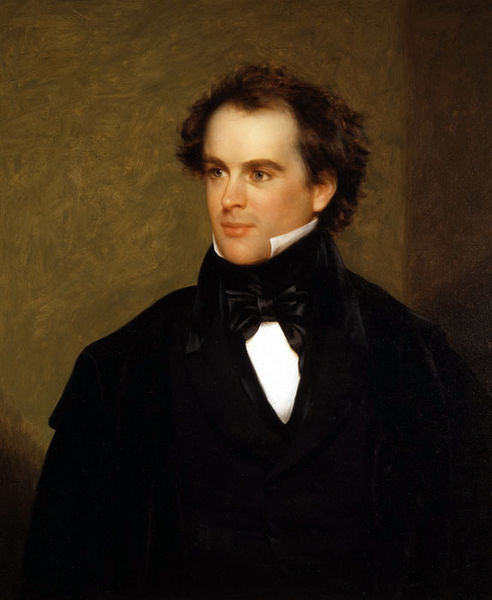 To continue this anti-capitalist narrative, teachers would need to severely limit students’ exposure to texts that are not informational, like fiction, especially fiction written by dead, white males of European origin, like Nathaniel Hawthorne. They would need to keep students unaware of his short story, “Earth’s Holocaust.” The literary language, the satire, the ironic message about reformers’ attempts to destroy all pleasurable things might give students some ideas. Students might also be surprised that, way back in 1844, someone was critiquing the progressive pretentions of reformers, someone who had actually lived in an experimental utopian community called Brooke Farm, one of many popping up at the time.
To continue this anti-capitalist narrative, teachers would need to severely limit students’ exposure to texts that are not informational, like fiction, especially fiction written by dead, white males of European origin, like Nathaniel Hawthorne. They would need to keep students unaware of his short story, “Earth’s Holocaust.” The literary language, the satire, the ironic message about reformers’ attempts to destroy all pleasurable things might give students some ideas. Students might also be surprised that, way back in 1844, someone was critiquing the progressive pretentions of reformers, someone who had actually lived in an experimental utopian community called Brooke Farm, one of many popping up at the time.
Students might be drawn in by a story that begins, “Once upon a time—but whether in the time past or time to come is a matter of little or no moment—this wide world had become so overburdened with an accumulation of worn-out trumpery that the inhabitants determined to rid themselves of it by a general bonfire.”
They might read that after the reformers throw into the fire liquor, weapons, marriage certificates, and title-deeds, they decide:
“that the human race had now reached a stage of progress so far beyond what the wisest and wittiest men of former ages had ever dreamed of, that it would have been a manifest absurdity to allow the earth to be any longer encumbered with their poor achievements in the literary line.”
(Of course, with an emphasis on literary reading students might be able to read in a manner beyond the literal.) First to go in the story are such authors as Voltaire, Milton, and Shakespeare. And then comes the Bible.
First to go in the story are such authors as Voltaire, Milton, and Shakespeare. And then comes the Bible.
Students might appreciate the dark humor of the hangman who promises to help the others after all the liquor is consumed. They might relate to the young woman who wants to throw herself in.
And they might not even need poster boards with geometric shapes to color in with repeated explanations from the “facilitator.”
But what work would that give Common Core proponents, video makers, curriculum writers, digital technology people, and those who would refashion our young people into global citizens in their own image?
Click here to see the Teaching Channel video, "Comic Book Templates: An Entry Point into Nonfiction."

